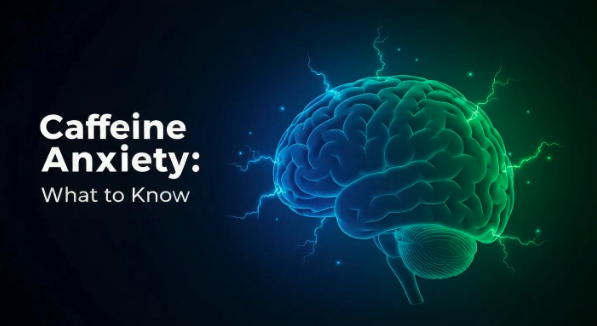The Role of Storytelling in Processing Trauma
Harnessing the Power of Narrative for Healing and Resilience

Storytelling as a Therapeutic Tool for Trauma Recovery
Storytelling has long been recognized across cultures and clinical practices as a vital means of healing from trauma. It facilitates emotional expression, fosters understanding, and promotes resilience by helping individuals organize chaotic memories into coherent, meaningful narratives. This article explores the multifaceted role of storytelling in trauma processing, examining psychological mechanisms, therapeutic techniques, cultural significance, and insights from research studies.
The Psychological Foundations of Storytelling in Trauma Recovery
How does storytelling support emotional processing and memory reconsolidation?
Storytelling plays a vital role in helping trauma survivors process their emotions. When individuals recount their traumatic experiences, they engage in emotional regulation, which reduces avoidance behaviors and allows for a healthy engagement with difficult feelings. This process is closely linked to memory reconsolidation, where recalling traumatic memories during storytelling helps reframe and reorganize these fragmented, emotionally charged memories. By doing so, survivors can diminish the distress associated with these memories, making them more manageable and less intrusive.
Repetitive narration and reflection enable the brain to alter the emotional impact of traumatic memories, leading to emotional catharsis. Therapeutic techniques like narrative exposure therapy utilize this principle, helping individuals integrate painful memories into their broader life story, fostering healing and resilience.
What is the role of constructing a narrative identity?
Constructing a coherent narrative identity is fundamental in trauma recovery. Trauma often disrupts an individual's sense of self, causing feelings of disconnection and confusion. Through storytelling, survivors craft a narrative that links past experiences with present understanding, creating a sense of continuity and meaning.
This process allows individuals to see their traumatic experiences as part of their overall life story rather than as defining moments. It helps in rebuilding self-esteem, fostering agency, and integrating the trauma into a positive or resilient self-image. Narrative therapy techniques emphasize this restructuring, facilitating post-traumatic growth.
Which neural mechanisms are involved in trauma storytelling?
Neuroscience research highlights that storytelling engages several brain regions involved in emotion, memory, and social cognition. The amygdala, which encodes sensory and emotional aspects of trauma, is hyperactive during traumatic experiences. Recounting stories during therapy activates prefrontal regions associated with emotional regulation, helping to temper amygdala overactivity.
Furthermore, the hippocampus, critical for memory consolidation, is engaged in reconstructing memories during storytelling, aiding in the transition from fragmented, distressing memories to coherent narratives. This neural interplay supports the process of reprocessing traumatic memories, reducing their emotional intensity, and strengthening adaptive responses.
| Neural Regions Involved | Functions | Role in Trauma Processing |
|---|---|---|
| Amygdala | Emotional encoding | Hyperactive during trauma, triggers fear responses |
| Prefrontal Cortex | Emotional regulation | Helps control amygdala activity, promotes calm |
| Hippocampus | Memory organization | Facilitates reconsolidation of traumatic memories |
| Broca's Area & Wernicke's Area | Language and storytelling | Supports articulation and understanding of narratives |
Understanding how these brain regions interact during storytelling underscores its effectiveness as a therapeutic tool to modify trauma-related neural activity and promote psychological healing.
The Therapeutic Use of Storytelling Techniques

What are some therapeutic techniques involving storytelling for trauma recovery?
Storytelling plays a vital role in trauma therapy, helping individuals process their experiences and rebuild a sense of control. Several approaches incorporate storytelling to facilitate healing.
One prominent method is narrative therapy, where clients craft personal stories about their trauma. This technique allows for externalizing problems, meaning the issue is viewed as separate from the individual, which can reduce self-blame and foster a sense of agency. Trauma narratives are then constructed, organized, and shared to make sense of painful memories.
Deconstruction is another important approach, analyzing these stories to challenge and change limiting beliefs or distortions tied to trauma. Creative tools like timelines or conversation mapping assist clients in visualizing and sequencing traumatic events, improving clarity and emotional regulation.
Group approaches such as outsider witness methods promote communal validation, where others listen and reflect back the client's story, strengthening support networks.
Beyond verbal storytelling, arts-based techniques like metaphor creation, journaling, and visual art facilitate emotional expression and re-authoring. These methods enable clients to explore their trauma creatively, empowering them to develop new, resilient narratives.
Incorporating storytelling into evidence-based therapies like Eye Movement Desensitization and Reprocessing (EMDR) and Cognitive Processing Therapy (CPT) enhances their effectiveness. EMDR, for instance, allows clients to revisit traumatic memories in a safe environment while engaging in guided eye movements that help reprocess and diminish the emotional impact.
Similarly, CPT involves writing and discussing trauma narratives to process thoughts and beliefs about the trauma, supporting cognitive restructuring and emotional healing.
In sum, diverse storytelling techniques—ranging from narrative construction and externalization to creative arts and group validation—work synergistically within established therapies to promote recovery and resilience after trauma.
The Significance of Personal Narratives in Trauma Therapy

What is the significance of personal narratives in trauma therapy?
Personal narratives serve as a foundational element in trauma therapy, providing a structure for individuals to organize and understand their often fragmented and overwhelming memories. Trauma activates the amygdala, which encodes sensory elements of traumatic events and creates disjointed stories. Therapeutic approaches like Narrative Exposure Therapy (NET) guide clients in building a detailed, chronological story of their life, including both traumatic and positive experiences. This process helps reframe traumatic memories, making them more manageable and less emotionally charged.
Sharing these stories within a safe therapeutic environment allows individuals to process emotions, reducing feelings of helplessness and fostering resilience. Repetitive storytelling diminishes the emotional intensity of painful memories, enabling survivors to regain control over their narrative and their reactions.
The content, affect, and meaning embedded within trauma stories deeply influence psychological outcomes. For instance, the use of emotion words and pronouns like "I" can reflect how individuals process their experiences and may correlate with healing progress. Properly constructed narratives help rebuild a coherent self-identity, supporting recovery and growth.
Overall, personal narratives are powerful tools that allow trauma survivors to contextualize their experiences, confront emotional pain, and develop a renewed sense of agency and hope. This narrative work not only alleviates symptoms like PTSD but also encourages a forward-looking perspective, promoting long-term healing.
Trauma-Informed Storytelling: Ethical Practice and Empowerment
What is trauma-informed storytelling?
Trauma-informed storytelling is an approach rooted in the principles of safety, consent, and emotional well-being. It involves sharing personal stories of trauma in a way that prioritizes the survivor’s control and comfort. This method emphasizes creating a supportive environment in which individuals feel empowered to narrate their experiences without feeling re-traumatized.
Essential practices include obtaining informed consent before sharing, providing content warnings when necessary, and being attentive to signs of distress. The main goal is to foster healing by reducing emotional harm and promoting understanding among audiences—whether they are professionals, community members, or the general public.
This approach is guided by empathy and cultural humility, recognizing that trauma stories are sensitive and deeply personal. Ethical storytelling requires respecting the survivor’s pace and boundaries while encouraging empowerment through their narrative. Overall, trauma-informed storytelling aims to facilitate healing, promote awareness, and advocate for systemic change through mindful sharing of trauma experiences.
Safety and consent in story sharing
Ensuring safety and obtaining consent are cornerstones of this practice. Survivors should have full autonomy over what they choose to share and how they share it. Clear communication about the purpose of sharing, potential audiences, and the possible emotional impacts is vital.
Respecting boundaries and allowing survivors to set limits on content details help maintain their sense of safety. Supportive responses from listeners or facilitators foster trust and empower survivors to feel safe in their storytelling.
Supportive environments and cultural humility
Creating a safe and culturally humble environment is crucial. This includes understanding and respecting cultural differences in how trauma is experienced and expressed. Facilitators should be trained in cultural sensitivity and aware of diverse healing practices.
Supporting diverse voices and ensuring that storytelling spaces do not perpetuate power imbalances are essential for ethical practice. This helps in honoring each person’s background and fostering genuine connection and understanding.
Reducing re-traumatization and fostering empowerment
The primary objective of trauma-informed storytelling is to avoid re-traumatization. Techniques like grounding exercises, pacing, and providing mental health support help manage intense emotional reactions.
At the same time, storytelling is used as a tool for empowerment. It allows survivors to reclaim their narratives, develop a sense of agency, and build resilience. Sharing stories responsibly can inspire hope and inspire others to seek healing.
By combining these elements—safety, cultural humility, and empowerment—trauma-informed storytelling becomes a powerful method to support healing and foster a more empathetic and understanding community.
Cultural and Indigenous Traditions of Storytelling in Healing

What role do cultural and indigenous storytelling traditions play in trauma healing?
Storytelling has long been a vital part of indigenous and cultural practices, serving as a sacred method for healing, passing on knowledge, and strengthening community bonds. These traditions are more than just stories—they are vital tools for transmitting cultural values, resilience, and spiritual lessons that help individuals and communities recover from trauma.
In Native American cultures, storytelling circles act as communal therapy sessions, where participants share experiences and find emotional relief. These stories often feature metaphors, such as the butterfly, symbolizing transformation and hope, allowing individuals to express complex feelings safely.
The Inuit use storytelling to preserve language, land knowledge, and cultural identity. Sharing stories about the land and ancestors reinforces a sense of belonging and resilience against trauma induced by displacement or cultural loss.
Australian Aboriginal Dreamtime stories focus on origins, land laws, and spiritual teachings. These stories foster spiritual growth and a strong connection to land, which are essential for community resilience and healing.
Sacred ceremonies, like Navajo Night Chants, utilize storytelling as a form of restoring harmony within individuals and the community. These rituals facilitate the processing of trauma and help re-establish balance and health.
Overall, these storytelling traditions do more than share history—they serve as therapeutic practices that promote healing, reinforce cultural identity, and build collective strength.
Research Insights on the Effectiveness of Storytelling in Trauma Processing

What insights do research studies provide on storytelling’s influence on trauma processing?
Recent research consistently shows that storytelling is a potent method for helping individuals process trauma. When people share their trauma narratives, they engage in emotional expression that facilitates understanding and acceptance of their experiences. These stories activate neural pathways linked to resilience and emotional regulation, assisting in rewriting negative brain patterns associated with trauma.
Neuroscientific studies reveal that storytelling stimulates areas of the brain involved in empathy, self-reflection, and social connection. For example, engaging in narrative sharing can reduce the hyperactivity of the amygdala, which encodes traumatic memories. By revisiting these memories through therapeutic storytelling, individuals can reframe their experiences, decreasing fear and negative emotions.
Clinically, diverse techniques — including journaling, group therapy, and Eye Movement Desensitization and Reprocessing (EMDR) — utilize storytelling to process trauma effectively. EMDR, in particular, involves guided eye movements that help reprocess traumatic memories, easing emotional distress.
Research also indicates that storytelling fosters post-traumatic growth, helping individuals find meaning and build resilience after trauma. In cultural contexts, storytelling acts as a communal healing tool, enabling marginalized groups to challenge stigma, share collective wisdom, and restore cultural identity.
Therapeutic benefits extend beyond individual healing. Studies show that storytelling enhances empathy among listeners, promotes social cohesion, and supports emotional regulation. This combined effect can significantly improve mental health outcomes, including reductions in PTSD symptoms and anxiety.
| Aspect | Findings | Additional Details |
|---|---|---|
| Neural Impact | Activates resilience pathways | Reframes traumatic memories, reduces amygdala activity |
| Clinical Techniques | Journaling, group therapy, EMDR | Facilitates emotional processing and symptom reduction |
| Psychosocial Effects | Builds social bonds and empathy | Supports healing in community and family contexts |
| Long-term Outcomes | Reduced PTSD, increased resilience | Promotes integration of trauma into a coherent narrative |
In sum, research indicates that storytelling is a transformative approach in trauma therapy, enhancing emotional regulation, empathy, and recovery. When integrated with scientific methods and cultural practices, storytelling continuously proves to be a vital component of trauma healing and resilience-building.
Storytelling’s Role in Building Resilience and Community

Why is storytelling important in fostering resilience and understanding trauma experiences?
Storytelling plays a crucial role in helping individuals and communities recover from trauma. It allows people to piece together fragmented memories, turning overwhelming experiences into coherent stories that are easier to understand and process emotionally. By sharing stories, survivors gain a safe space where they can express feelings, achieve catharsis, and validate their experiences.
Cultural traditions emphasize storytelling as a way to maintain identity and cohesion. Indigenous communities, for instance, use storytelling to pass down heritage, teach moral values, and support spiritual healing. These shared narratives strengthen community bonds and foster collective resilience.
In therapeutic settings, storytelling methods like narrative therapy and group storytelling circles empower individuals to reframe their trauma. This process helps survivors regain a sense of control and promotes personal growth after difficult experiences.
Overall, storytelling nurtures empathy and understanding, creating connections that are essential for healing. It not only aids individual recovery but also helps communities rebuild trust and unity, reinforcing resilience in the face of adversity.
Continued Impact of Storytelling in Trauma Healing
In conclusion, storytelling is a powerful and versatile tool for processing and healing from trauma. It activates key psychological mechanisms, fosters emotional expression, and facilitates the reconstruction of a coherent identity. Whether through cultural, clinical, or communal pathways, stories serve as bridges to resilience, understanding, and growth. As research continues to validate these benefits, integrating storytelling into trauma-informed practices and cultural traditions remains essential for fostering recovery, empowerment, and collective well-being.
References
- Healing Through Storytelling: How Stories Can Help You Process ...
- Who Are We, But for the Stories We Tell: Family Stories and Healing
- The Healing Power of Storytelling - The Core Collaborative
- Trauma Narratives | Article | Therapist Aid
- The Power of Storytelling in Trauma - Number Analytics
- How Telling Your Story in Narrative Therapy May Help Heal Trauma
- [PDF] the-power-of-trauma-narrative-understanding-and-healing-through ...
- The impact of storytelling on building resilience in children: A ...
- [PDF] Stories that Heal: How Storytelling Aided Child Trauma Recovery in ...
- The Power of Storytelling in Trauma Healing - Number Analytics
More Resources
A team ready to start your journey.
Get in touch — today.
We are a safe space – a haven for exceptional individuals to receive discreet, personalized, in-person treatment and care.
.avif)



.webp)






